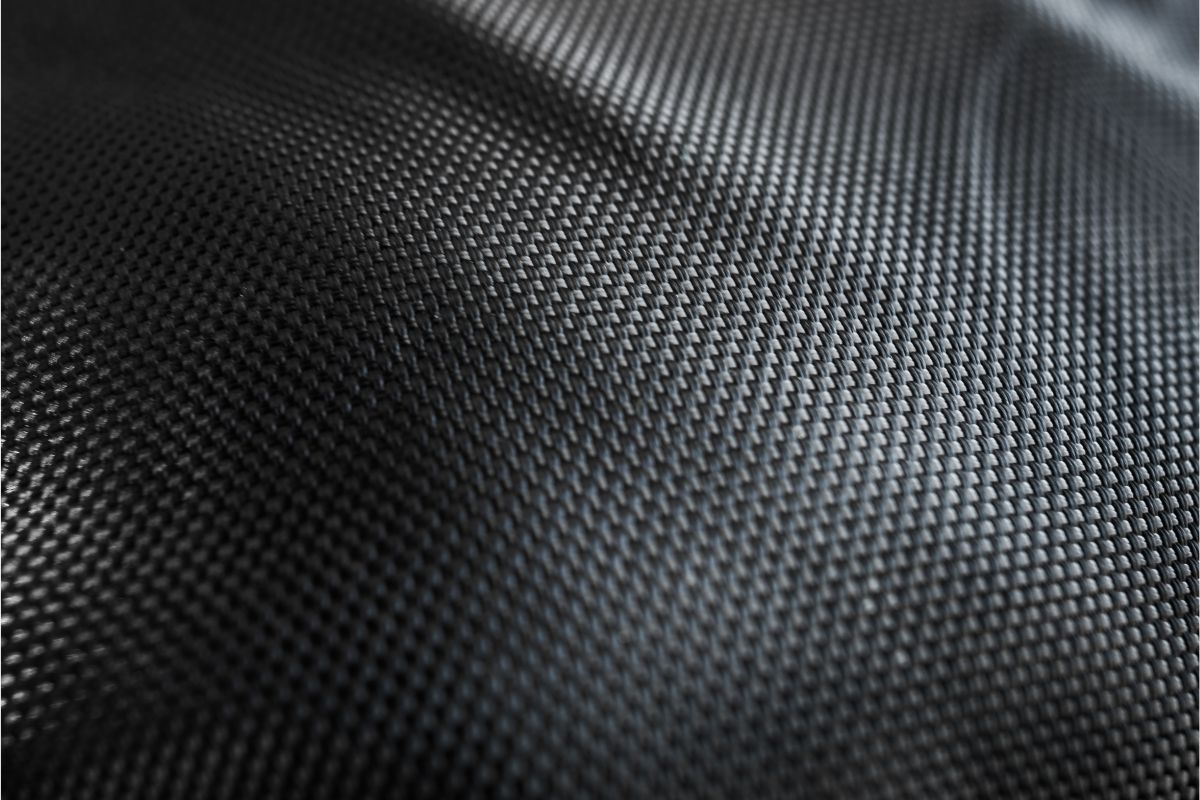Carbon fiber is a very strong but lightweight material that is used for several purposes in our everyday lives. It can be used to reinforce building materials in the home and is also commonly used for sporting goods, hobby equipment, and even race cars.

With so many uses for carbon fiber, you may find that there are situations where you will need to paint over it. This can be because the fiber has become dirty or you just need to match the color to something else.
Painting over carbon fiber isn’t wildly different from painting over other materials, but it does require some special techniques and tools to ensure that you do it correctly. In this article, we give you a complete guide to painting over carbon fiber.
Let’s get started!
Things To Keep In Mind
You can paint over carbon fiber but before you start, there are several points that you should keep in mind throughout the process. These will help you keep your expectations in check and ensure that you take the right steps to get the best end result.
When painted, carbon fiber will look different from the other parts around it so don’t expect you’ll have a neatly uniform look. The material will absorb paint very quickly but it will also run off if you splash water onto the fiber.
You need to be careful when touching the fibers with your hands as they are very sharp.
They can cut your skin so keep yourself covered and protected. You will need to be patient and careful as you paint and don’t expect perfection from the start as painting carbon fiber can take some practice.
Which Paint Should Be Used For Painting Over Carbon Fiber?
If you visit the paint aisles of your local homeware store, you will notice that there are many different types of paint available.
Although you can use any type of paint for painting over carbon fiber, there are definitely some types that will work better than others due to their consistency and how they dry.
When it comes to painting carbon fiber, we recommend using a primer first and then painting with acrylic enamel paint. This is a very durable paint and in our opinion, it has the best consistency and coverage for carbon fiber.
A Complete Guide To Painting Over Carbon Fiber
Now that we know what to watch out for and the type of paint to use, let’s look at how to paint over carbon fiber.
Tools Needed For Painting
When painting over carbon fiber, we would recommend using a roller and a paintbrush. Using a combination of the two means that you can cover the carbon fiber completely while ensuring there are as few paint streaks as possible.
You can use an airbrush instead if you prefer, but you will need to ensure that the paint is diluted properly. Our preference, however, is to use a roller and paintbrush.
The complete set of tools you’ll need for painting over carbon fiber are:
- Paint rollers and brushes/airbrush
- Painter’s tape
- Painter’s mask
- Gloves
- Long sleeves
- Soap and water
- Metal polish
As you can see, there is a lot of protective gear on this list and these are important because of how sharp the carbon fibers can be. If you’re not careful, you can easily cut yourself as you paint.
How To Prepare The Carbon Fiber
No matter what you’re painting, the first step to getting the best results is to prepare your surface. This is true whether you’re painting carbon fiber, walls, or wood.
To prepare carbon fiber, you need first to clean the surfaces of the fiber. You don’t need any special soaps or treatments for this as it only requires mild soap and some water.
Wash the surface of your carbon fiber and ensure that it is completely dry before you continue.
After washing the carbon fiber, use some metal polish and rub this over the carbon fiber. This will give the fibers a nice shine and will make your paint stick to the carbon fiber more easily.
How To Prepare The Surrounding Area
It’s likely that the carbon fiber you’re painting will not be isolated and will instead be fixed and surrounded by other materials.
You should isolate the carbon fibers from these surroundings by using tape and stickers. This helps in two ways as it both protects the materials and will also help the finished paint look better.
Apply A Coat Of Primer
After you’ve cleaned your carbon fiber and prepared the surrounding area, you’re ready to start painting.
The first step to getting the best results is to apply a primer. Primers serve a variety of purposes and in the case of carbon fiber, a primer will give you a more even surface to paint on.
It’ll help your paint stick better than if you’re painting directly onto carbon fiber and will help your paint look better for longer.

Apply A Light Coat Of Paint
We recommend that you start painting over the surface of the carbon fibers with a lighter shade of paint first. This is useful because it will help you see where there is paint remaining and the parts that are in particular need of a touch-up.
You should keep your layers thin but even and make sure that you always allow a layer of paint to dry before you apply the next one.
Don’t think that just because this is the first layer of the paint that the color doesn’t matter. The first color becomes the base of your final look so you should be careful when you choose the shade.
Although we suggested starting with a light color, if you’re looking for something more unique and modern, a dark or metallic color can give you a very interesting finish.
If you’re not sure how to layer and match colors, however, a lighter shade for your base is a safer choice.
Apply Darker Shades Over The Base Layer
Once your base layer has been applied and has fully dried, you can start building up the color and the finer details.
This is best done with darker shades but it can be a delicate process that needs a lot of detail. You don’t really want your finished result to be a flat color.
At this stage of the process, you might find that an airbrush is easier to use than a paintbrush.
Polish Your Carbon Fiber
You need to be wary of your paint not adhering to the carbon fibers correctly and instead peeling and flaking away. After your first couple of layers of paint have been applied and dried, you should polish the carbon fibers.
This is best done with a rotary device and it will help the paint stick.
Finish The Job With A Clear Coat Of Sealant
Once you’re happy with your paint job, the number of layers, and the details you’ve painted, leave the paint for at least 24 hours to ensure it is fully dry. After the 24 hours have elapsed, apply a coat of clear sealant.
This will help protect your paint and prevent it from flaking and becoming scratched.
Sealants that have a matte finish are the best in our opinion. These will make your newly-painted carbon fiber look smooth.
Further Tips And Hints
If this is your first time painting carbon fiber, don’t feel disheartened if you find it tricky.
There is a learning curve to painting carbon fiber and getting the best results so your first attempt at painting carbon fiber will not look as good as the paint job of someone who has experience.
Don’t be tempted to rush as you paint, either. Once completed, the paint should last for a very long time so it’s worth taking a few extra moments to slow down and ensure you are doing it right instead of doing it fast.
Two of the most important parts of the process are preparing your surface and keeping your layers thin. Don’t apply too much paint at once and always allow it to dry before moving on.
Final Thoughts
In this article, we explained how to paint over carbon fiber. We detailed a step-by-step guide and included several hints and tips to ensure you get the best result. We hope that this article has answered all of your questions about painting over carbon fiber.
- How To Drill Into Brick? - October 31, 2022
- How To Repair And Refinish Hardwood? - October 31, 2022
- Floetrol – What Is It? When To Use It: Complete Guide - October 31, 2022
